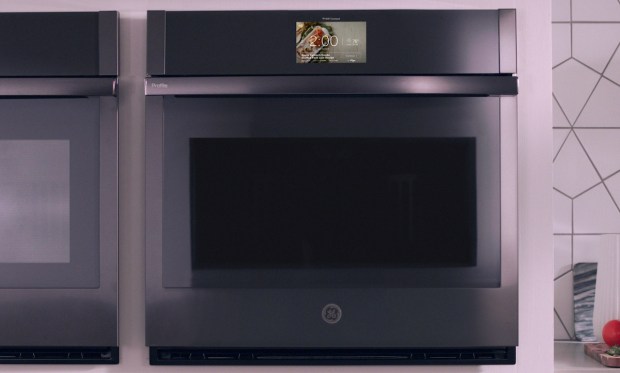
Throughout 2023, grocers stepped up their contextual commerce initiatives, not only expanding shoppable recipe content but also reaching new devices and digital platforms.
Take, for instance, Kroger, which at the end of the year began targeting consumers’ connected kitchens. Earlier this month, GE Appliances announced a collaboration with the grocer, whereby certain smart ovens’ LCD screens display recipes from Kroger and select consumer-packaged goods (CPG) brands, enabling consumers to buy ingredients directly from the device.
The move follows previous smart kitchen grocery commerce integrations, such as the connected refrigerators that offer shopping capabilities. PYMNTS Intelligence revealed that 9% of consumers own smart fridges, up from 5% in 2019.
Meanwhile, Albertsons turned its focus to social media, looking to reach consumers in some of the digital spaces where they spend the most time with interactive, shoppable advertisements on Facebook and Instagram via a partnership with Meta launched over the summer.
In another effort to convert consumers’ social media food browsing to purchasing, the Kellogg Company announced in September that its Pringles brand was partnering with The Caviar Company to launch the “Crisps and Caviar Collection,” inspired by a TikTok trend of pairing the snack with caviar, which had garnered over 10 billion views.
Granted, social media commerce remains relatively unpopular. The study “Tracking the Digital Payments Takeover: Monetizing Social Media Edition,” a PYMNTS Intelligence and Amazon Web Services collaboration, drew from a survey of nearly 3,000 U.S. consumers. It revealed that while 43% browse social media to find goods and services, 14% had purchased a product through any social media platform. Among these social commerce customers, 32% had purchased food and beverages.
Additionally, grocers tapped new forms of shoppable culinary content in the year. Over the summer, for example, The Fresh Market, which has 159 locations across 22 states, announced a sponsorship of culinary personality Vera Stewart’s “The VeryVera Show,” which included Stewart hosting a shoppable livestream for the grocer.
Shoppable recipes, meanwhile, one of the more-explored areas of contextual commerce in grocery, continued to gain ground over the year. Albertsons, for instance, partnered with contextual commerce platform Chicory in the fall to drive eCommerce sales through recipe content on other sites.
“An integration with Chicory essentially allows a retailer like Albertsons to be able to reach potential shoppers off-site and drive that traffic back over to on-site, where they can either perform an eCommerce transaction or they can engage with on-site recipe content and look for additional inspiration and do some cart building activities,” Nick Minnick, vice president of strategic partnerships at Chicory, told PYMNTS in an interview. “… So, in addition to a retailer’s own shoppers, we’re reaching a fairly high percentage of new and lapsed shoppers too.”
Overall, many consumers are engaging with grocers’ eCommerce options. The report “Consumer Interest in an Everyday App,” a PYMNTS Intelligence and PayPal collaboration, drew on responses from more than 2,200 U.S. consumers. It revealed that 61% of those who had shopped for groceries in the previous month did so via connected devices at least some of the time.
Still, these transactions represent only a small share of total grocery sales. PYMNTS Intelligence’s study “Tracking the Digital Payments Takeover: Catching the Coming eCommerce Wave,” created in collaboration with Amazon Web Services (AWS), drew from an April survey of nearly 2,700 U.S. consumers. It revealed that 12% of grocery orders are placed via digital channels.